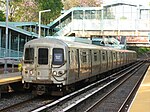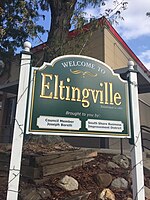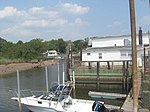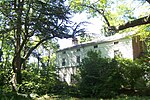The South Shore is a geographical term applied to the area in the New York City borough of Staten Island, south and east of the island's ridge of hills (and Richmond Creek and Fresh Kills south of Historic Richmond Town) along the waterfront and adjacent areas from the Narrows to the mouth of the Arthur Kill. Many observers prefer to restrict its scope to the neighborhoods located between the shoreline of Raritan Bay on one side and Richmond Creek and Fresh Kills on the other, thus encompassing the neighborhoods of Great Kills to Tottenville only. Those who use this narrower definition of the "South Shore" prefer the term "East Shore" for the communities that lie along Lower New York Bay, and inland for approximately 2 to 2+1⁄2 miles, from Bay Terrace and Richmondtown to as far north as Grasmere and Concord. The South Shore (under the narrower definition) is represented in the New York City Council by Joe Borelli.
Geologically, the area is an outwash plain of glacial sediment formed from the edge of the terminal moraine, and continues as an underwater shoal into Lower New York Bay, where it was a prime oystering ground in the 19th century.
Prior to the 1960s, the South Shore was undeveloped. After the building of the Verrazzano-Narrows Bridge, the South Shore experienced rapid urbanization and its population rose sharply. The population is predominantly white, but according to census data has been growing more heterogeneous in recent years. Many residents are of Italian, Irish, English, and Jewish descent, with a massive boom to the Italian population in the 1980s and 1990s. The area generally has a low crime rate except for thefts. Truancy, however, is a recurring problem.Commerce was previously dominated by small businesses despite the presence of Hylan Boulevard running along the eastern boundary of the South Shore. However, a number of shopping centers have been built over the last decade. The area is still known for small businesses, including 24-hour delis, pork stores, pizzerias, cafés, gourmet food shops, and a number of independently owned pharmacies, florists, hair, tanning and nail salons, paint stores, and car repair shops.










